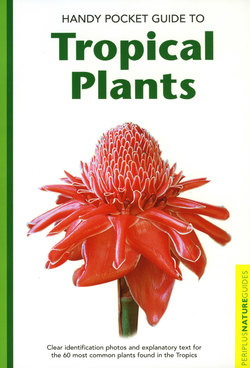Читать книгу Handy Pocket Guide to Tropical Plants - Elisabeth Chan - Страница 6
На сайте Литреса книга снята с продажи.
ОглавлениеIntroduction
The plants featured in this handbook grow in the region casually called the 'tropics'. Most of them are comfortable around the Equator. A few are more commonly found in latitudes that are described as the 'monsoon tropics' where there is a distinct dry season.
They have been loosely grouped into four categories. The first of these comprises the plants that come to everybody's mind when the words 'tropical plants' are mentioned. They include the ginger and the banana, amongst others.
The next group are those plants that are of great economic significance to man but whose final product, familiar in daily life, does not bear any resemblance to the trees shown in these pages. Included in this class are the rubber and teak trees and the clove.
The third category are plants that are beautiful. Some like the Amherstia are rare. Some such as the Grammatophyllum are rarely seen in bloom. Others are beautiful even when seen in their species form which may be obscured by hybridization.
There are oddities in every sphere of life and the plant world is no different. Some such as Rafflesia are singular. It is a peculiar flower, restricted in its distribution, and hardly ever seen. The Nepenthes, more often seen in cultivated form, has pitchers in its many species that are far more dazzling.
Before the present era of cheap, mass travel, the tropics had a mystique that no longer exists. Plants from these places were familiar only from illustrations in travel or botany books. Some of these old line drawings and lithographs which antedated the camera are reproduced in the pages of this book.
Many of the plants in this book are world travelers. In the centuries beginning from the 15th when European exploratory voyages began in earnest, plants of economic and botanical interest were taken from one hemisphere to the other. Even before this, many significant plants had been taken from their point of origin to other places. Many of the plants now common to tropical Asia are exotics in the true botanical sense. The story of rubber is a classic example of a valuable plant that was developed far from its native home.
There are now international agreements governing the transportation of plants because the plants themselves may be endangered and because pests and diseases may be carried far beyond their native homes into areas where there is no balance with their natural predators.
Sometimes travelers who are not eco-tourists to the tropics may be disappointed if they wish to see or read about tropical plants. They are usually short of time and have to visit a Botanic Garden, a Nature Reserve or a plant market or nursery. All these visits may not be feasible. We hope that this modest guide may make up for some of these disappointments.
